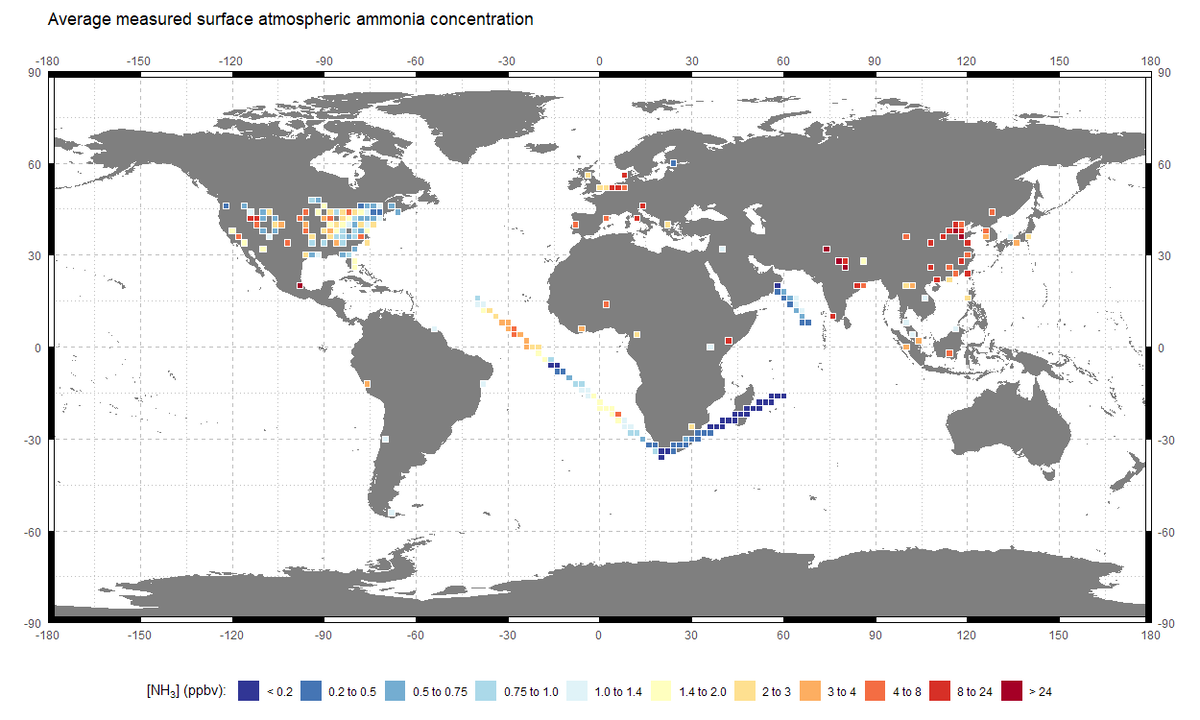Ammonia (NH3), the most prevalent alkaline gas in the atmosphere, plays a significant role in PM2.5 formation, atmospheric chemistry, and new particle formation. This paper reviews quantification of [NH3] through measurements, satellite-remote-sensing, and modeling reported in over 500 publications towards synthesizing current knowledge of [NH3], focusing on spatiotemporal variations, controlling processes, and quantification issues. Most measurements are through regional passive sampler networks. [NH3] hotspots are typically over agricultural regions like the Midwest US and North China Plain, with elevated concentrations reaching monthly averages of 20 and 74 ppbv, respectively. Topographical effects dramatically increase [NH3] over the Indo-Gangetic Plains, North India and San Joaquin Valley, US. Measurements are sparse over oceans, where [NH3] ≈ few tens of ppbv, variations of which can affect aerosol formation. Satellite-remote-sensing (AIRS, CrIS, IASI, TANSO-FTS, TES) provides global [NH3] quantification in the column and at surface since 2002. Modeling is crucial for improving understanding of NH3 chemistry and transport, its spatiotemporal variations, source apportionment, exploring physicochemical mechanisms, and predicting future scenarios. GEOS-Chem (global) and FRAME (UK) models are commonly applied for this. A synergistic approach of measurements↔satellite-inference↔modeling is needed towards improved understanding of atmospheric ammonia, of concern from the standpoint of human health and the ecosystem.

